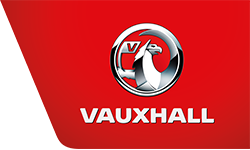Vauxhall - Vectra - Owners Manual - 2005 - 2008
Get your hands on the complete Vauxhall factory workshop software
Download nowGet your hands on the Complete Vauxhall Factory Workshop Software
Download nowGet notified when we add a new VauxhallVectra Manual
We cover 60 Vauxhall vehicles, were you looking for one of these?

Vauxhall - Astra - Workshop Manual - (2017)

Vauxhall - Combo - Workshop Manual - 200 - 2012

Vauxhall - Corsa - Workshop Manual - (1991)

Vauxhall Vauxhall Astra 2006 Vauxhall Astra Owners Manual

Vauxhall Vauxhall Zafira 2007 Vauxhall Zafira Owners Manual

Vauxhall Vauxhall Combo 2006 Vauxhall Combo Owners Manual

Vauxhall Vauxhall Meriva 2007 Vauxhall Meriva Owners Manual

Vauxhall Vauxhall Astra 2010 Vauxhall Astra Owners Manual

Vauxhall Vauxhall Astra 2008 Vauxhall Astra Owners Manual

Vauxhall - Corsa - Owners Manual - 2011 - 2011

Vauxhall - Astra - Workshop Manual - 2018 - 2018

Vauxhall - Antara - Workshop Manual - (2006)

Vauxhall Vauxhall Astra 2012 Vauxhall Astra Owners Manual

Vauxhall Vauxhall Antara 2009 Vauxhall Antara Owners Manual

Vauxhall Vauxhall Meriva 2010 Vauxhall Meriva Owners Manual

Vauxhall - Corsa - Workshop Manual - 1988 - 1992.PDF

Vauxhall Vauxhall Astra 2014 Vauxhall Astra Owners Manual

Vauxhall - Meriva - Owners Manual - 2012 - 2012

Vauxhall Vauxhall Agila 2006 Vauxhall Agila Owners Manual

Vauxhall - Corsa - Owners Manual - 2013 - 2013

Vauxhall Vauxhall Movano 2008 Vauxhall Movano Owners Manual

Vauxhall Vauxhall Astra 2007 Vauxhall Astra Owners Manual

Vauxhall Vauxhall Antara 2011 Vauxhall Antara Owners Manual

Vauxhall Vauxhall Insignia 2013 Vauxhall Insignia Owners Manual

Vauxhall - Nova - Workshop Manual - (1992)

Vauxhall - Corsa - Sales Brochure - 2007 - 2007 (2)

Vauxhall - Combo - Parts Catalogue - (2008)

Vauxhall Vauxhall Combo 2013 Vauxhall Combo Owners Manual

Vauxhall - Antara - Owners Manual - 2013 - 2013 (2)

Vauxhall Vauxhall tigra 2009 Vauxhall Tigra Owners Manual

Vauxhall Vauxhall Meriva 2014 Vauxhall Meriva Owners Manual

Vauxhall - Zafira - Miscellaneous Documents - 2009 - 2009

Vauxhall - Movano - Workshop Manual - 2016 - 2016

Vauxhall - Astra - Parts Catalogue - 2001 - 2001

Vauxhall - Corsa - Miscellaneous Documents - 2014 - 2014

Vauxhall - Movano - Workshop Manual - 2005 - 2005 (2)

Vauxhall - Corsa - Owners Manual - 2013 - 2013 (2)

Vauxhall - Astra - Owners Manual - 2013 - 2013 (2)

Vauxhall Vauxhall Antara 2014 Vauxhall Antara Owners Manual

Vauxhall - Combo - Owners Manual - 2013 - 2013

Vauxhall Vauxhall Agila 2010 Vauxhall Agila Owners Manual

Vauxhall - Combo - Owners Manual - 2012 - 2012

Vauxhall - Antara - Owners Manual - 2014 - 2014

Vauxhall - Antara - Sales Brochure - 2012 - 2012

Vauxhall - Meriva - Owners Manual - 2016 - 2016

Vauxhall - Astra - Sales Brochure - (2016) (2)

Ford - Victoria - Parts Catalogue - 1935 - 1935

Vauxhall - Tigra - Sales Brochure - (2006)

Vauxhall - Calibra - Workshop Manual - 1994 - 1994

Vauxhall - Movano - Workshop Manual - 2005 - 2005

Vauxhall Vauxhall Vivaro 2013 Vauxhall Vivaro Owners Manual

Vauxhall - Corsa - Sales Brochure - (2011)

Vauxhall - Astra - Sales Brochure - (2009)

Bultaco - Motorcycle - Bultaco_Frontera_74_5d8a7f8219aab8a12373568

Vauxhall - Antara - Sales Brochure - (2008)

Vauxhall - Omega - Workshop Manual - (2010)

Vauxhall - Astra - Sales Brochure - (2006)

Vauxhall - Corsa - Sales Brochure - (2020)

Vauxhall - Corsa - Sales Brochure - 2010 - 2010

Vauxhall Vauxhall Movano 2013 Vauxhall Movano Owners Manual

Vauxhall - Astra - Workshop Manual - (2017)

Vauxhall - Combo - Workshop Manual - 200 - 2012

Vauxhall - Corsa - Workshop Manual - (1991)

Vauxhall Vauxhall Astra 2006 Vauxhall Astra Owners Manual

Vauxhall Vauxhall Zafira 2007 Vauxhall Zafira Owners Manual

Vauxhall Vauxhall Combo 2006 Vauxhall Combo Owners Manual

Vauxhall Vauxhall Meriva 2007 Vauxhall Meriva Owners Manual

Vauxhall Vauxhall Astra 2010 Vauxhall Astra Owners Manual

Vauxhall Vauxhall Astra 2008 Vauxhall Astra Owners Manual

Vauxhall - Corsa - Owners Manual - 2011 - 2011
Thanks for visiting my little site! I’ll send the PDF straight away

Drag the slider left to right to donate what you can.
The site costs me over $1,000 per month keep online and is totally reliant on donations to keep it going. Donations are totally optional, if you can't afford a few dollars right now please don't feel pressured, but if you can... Pretty please could you help?
or... get all our Vauxhall Vectra manuals for $15
Get access to all pdfs for this model paying only $15

Thank you for visiting OnlyManuals.com
Vauxhall Vectra 2005 PDF will be shown after captcha resolving





































































































































































































































